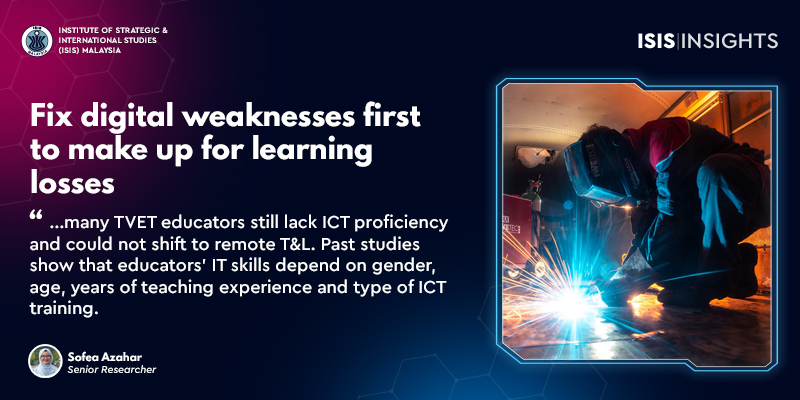TVET education bore brunt of shortfalls in online platforms, setting back students by 2 years
AS Malaysia enters the endemic phase of Covid-19, it is time to look closely at the remote learning issues that cropped upduring lockdowns and reimagine Technical and Vocational Education and Training (TVET) education as a whole. This is crucial to ensure continuity and to prepare pupils for the workforce.
The pandemic highlighted the importance of technologies in remote teaching and learning (T&L) amid the closure of educational institutions. But shortfalls in remote learning and the digital divide severely disrupted education access for many pupils, particularly those from poorer socioeconomic background. The Asian Development Bank estimates suggest that Malaysian pupils lost between 5.4 and 11.4 months of schooling, among the highest in the region.
For TVET, it has been difficult to adapt to remote learning due to the nature of T&L. Conversion of physical learning to distance learning became a concern because of several factors. These included a lack of skilled teaching staff, resistance to digital learning among pupils and gaps in digital learning platforms and infrastructure.
In Malaysia, many TVET educators still lack ICT proficiency and could not shift to remote T&L. Past studies show thateducators’ IT skills depend on gender, age, years of teaching experience and type of ICT training. It was also discovered that TVET educators possessed moderate-level digital skills, which affected how much of ICT was applied in classrooms.
At the same time, there was resistance from the pupils as they are used to hands-on training in laboratories or school-based workshops. Many also felt let down by the ineffectiveness of distance learning platforms. This can be attributed to access to digital infrastructure and T&L methods as well as geographical location. For instance, a survey conducted among polytechnic students in Sabah showed that there were problems with online learning application systems and limited interaction with the educators.
If these issues are not addressed promptly and effectively, further learning losses could lead to long-term repercussions on the skills of workforce, productivity, earnings, as well as economic growth. They would also go against Malaysia’s ambition to produce more skilled talents through empowerment of TVET.
There is urgency now to make up for the lockdown losses by improving online learning platforms, internet infrastructure and the competency of educators.
First, there is a need to create a centralised digital TVET learning platform and develop new pedagogies for TVET education. These include capacity building for instructors and teachers to enhance their awareness and preparedness in using digital resources. There should be more engagement and cooperation between industry players and key TVET bodies, such as the providers, National Digital TVET Innovation Centre (NDTIC) and Malaysia Research Institute for Vocational Education & Training (MyRIVET).
Second, development costs could be one of the main concerns in adopting innovative technologies in TVET remote teaching. For instance, VR and AR solutions cost between US$1,200 (RM5,025) and US$150,000 (RM628,160). As such, encourage more public-private partnerships to share the burden of costs and technological development.
Finally, the unequal impacts of the pandemic on marginalised groups due to gaps in infrastructure should not be ignored. Pupils had to endure severe learning losses compared with their peers in higher economic status. Blended learning should be considered during the endemic phase. Although schools have reopened, distance learning will still be practised if needed. The government must re-examine the initiatives for remote learning and tailor them to the real needs of vulnerable households to ensure that no one falls through the cracks.
Pupils cannot afford to lose more after nearly two years of severe learning losses during the lockdowns.
A skilled workforce is crucial for Malaysia’s transition to an advanced nation. TVET plays a significant role in achieving this aspiration. Going forward, we should be more proactive in tackling digital learning shortcomings and preparing for future crises that could threaten learning.
This article also appeared in the New Straits Times on 17 March 2022.





